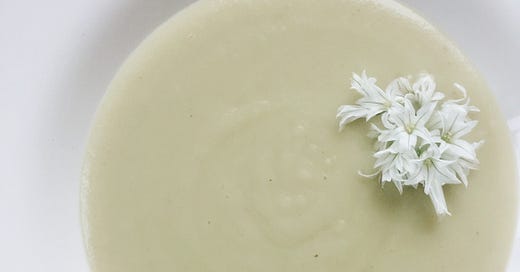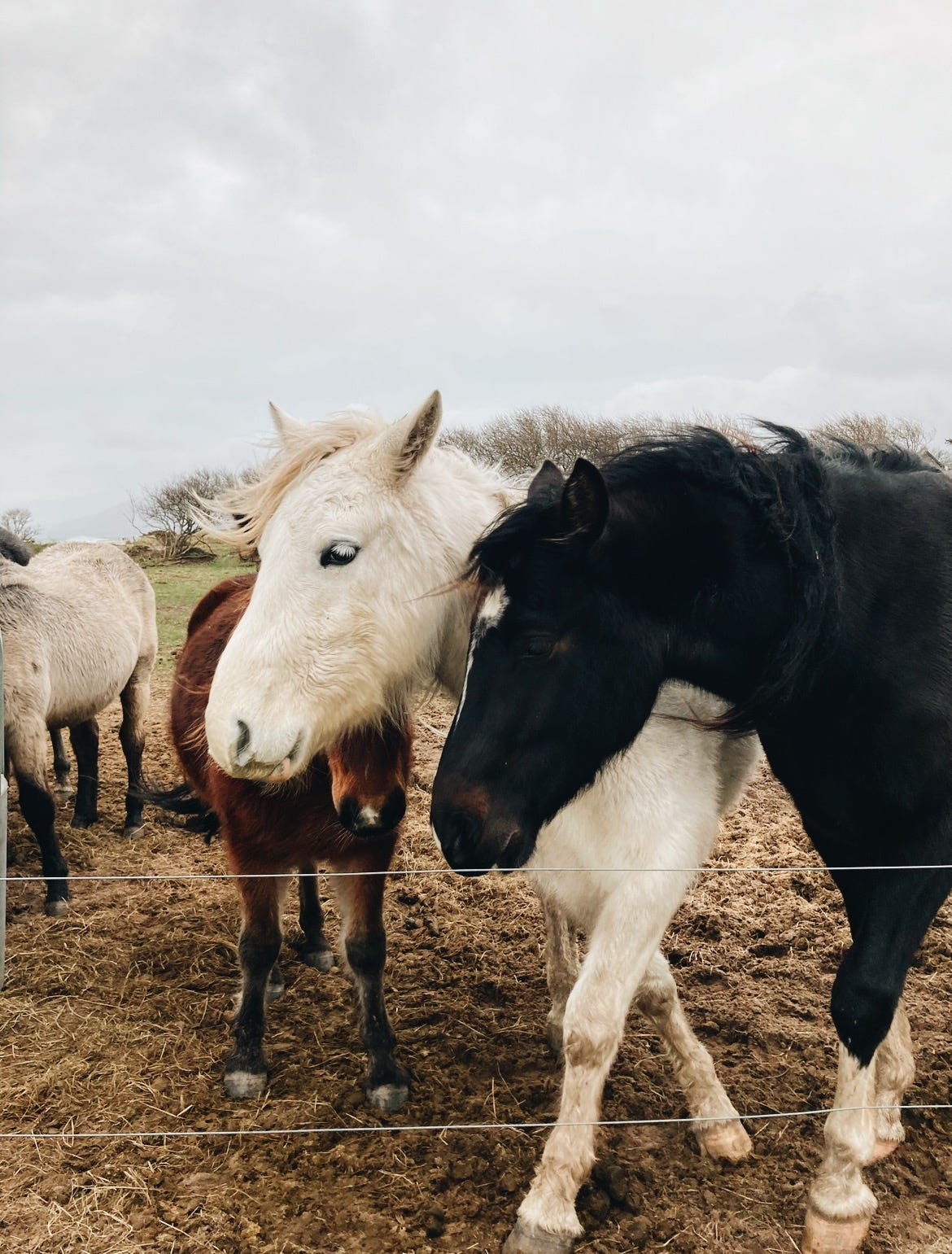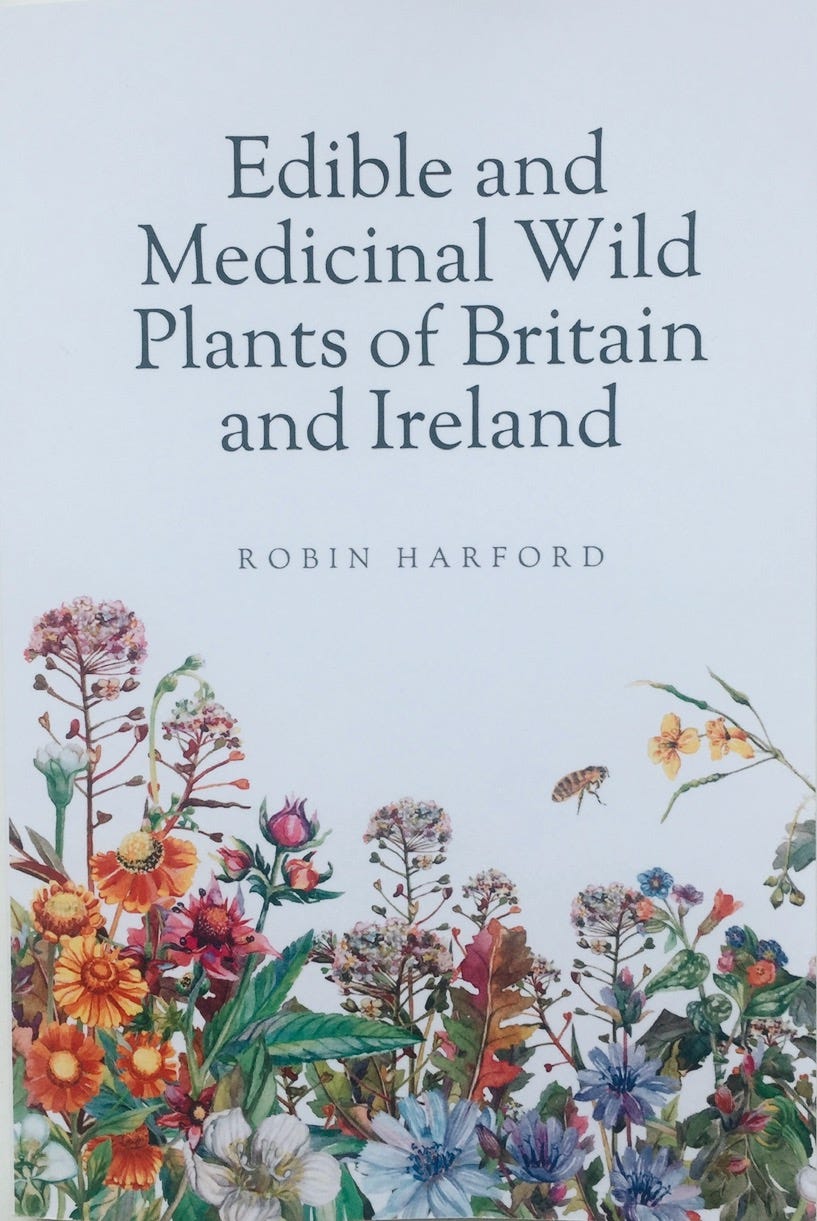Leek, Potato and Three-Cornered Leek Soup
Gluten-Free and Vegan. Translating Landscapes, Rediscovering our Roots or Edible and Medicinal Wild Plants as Expressions of Culture
Hello everyone, to have all of Green Italian Kitchen’s recipes concentrated in one place, I will continue to revisit dishes that have featured on ‘other platforms’ over the past years. I hope that you will enjoy this one. Thanks again for being here.
A wealth of knowledge linked to human traditions has been gained on these plants, which is worth preserving. - Il giardino fitoalimurgico per la valorizzazione delle piante spontanee in Agribusiness Paesaggio & Ambiente

There are a few corners in Aughacasla (try pronouncing that) on the majestic coast road from Tralee to Dingle where the three-cornered leek grows. I thought there was only one, but then..
A man called to me from across the road as I was collecting sparse offerings of wild garlic (this was before I knew its true name). He told me his garden was full of it if I wanted to help myself.
Myself and the children entered the gate as he backed into his front door, and we chatted as we picked blooms from the perfectly cured patch in front of his farmhouse. Tangled in a web of conversation, it was hard to leave. You could tell he was happy with the company, but the children became impatient. Fresh air was blowing off the sea, and they were yearning for the beach.
We unintentionally moved from Cork to Kerry in 2019 when the sale of our house in Cobh fell through. Unfortunately, there are no laws in Ireland to protect families from such misfortune. We were due to enter the house in September, and with all of our personal belongings in storage in Cork, we decided to pass the month of August in my cousin’s cottage on the Dingle Peninsula. When we received news that the sellers were pulling out, we were forced to stay in Kerry because 1) there is a major housing shortage in Ireland, and 2) our eldest was due to start elementary school within days.
It was the usual challenging time as Riccardo, who worked from his office in Cork, had to pass the week sleeping on his Italian pals’ sofa (Silvio from Abruzzo, the one who makes great ciambellone) until we resolved the situation. I was left on my own with two toddlers without our personal effects in a house that was not our own. Myself and the children would drop Riccardo off at the train station in Tralee on dark Sunday evenings with the wind and rain whipping past our windows, making our way back home again along that same coast road. The whole scenario, to include the roaring wind, left a lot of space for the imagination until the sun rose again.
This undesirable moment was a reminder of how fragile our systems and security can be, and it was also a blessing in disguise. The universe seemed to be answering our secret prayers as we were always dragging our feet behind us, driving back to Cork after many weekends spent in Kerry, a place that has always felt like home.
When COVID hit in 2020, Riccardo was able to work from home. The days got longer and brighter, and there was a new botanical world to discover as we stayed contained within the 2 or was it 4 kilometres distance, which also allowed us to access the sea. We fell in love with the landscape and the warm and inclusive community, so we stayed. And after what felt like 20 traslochi in 10 years, we finally bought a home.
Walking up and down country roads on a daily basis past fields filled with animals and touching the same hedgerows that my parents, aunts, uncles and grandparents knew woke me up to the magic of the biodiversity that surrounds us. These moments allowed me to appreciate on another level the native wild edible and medicinal plants surrounding us, first in Ireland and then in Italy. Yes, there were always the fresh vegetables from my mother-in-law’s garden and the fruit from the trees planted by my father-in-law, but when we returned to our Holy Valley here in Rieti to drive down the same roads that I have known for years, I saw an entirely different thing.
Phytoalimurgy is defined as the collection of wild plant species for food purposes. The word comes from the Greek phytón (plant) and the Latin alimenta urgentia (nutrition in case of need, food urgency). This was a principle of nutrition in times of war, confirmed by the childhood stories told by my mother-in-law. ‘In the recent past, it was customary for many people, especially the less well-off classes, to go foraging for herbs; for these people, wild vegetables were a primary food resource.’
Ernesto Di Renzo, Anthropologist at Rome Tor Vergata, explores this concept in his book ’Eating the Authentic. Food and Nutrition Between Cultural Revivalisms and the Nostalgia Industry’. In his examination of the ‘Uses and Knowledge of Alimurgic Herbs in the Folkloric Culture of Molise - The Case Study of Oratino’, he cites the creation of this term ‘coined in its original wording alimurgia by Giovanni Targioni Tozzetti in 1767 to indicate the study of solutions to be found in situations of food urgency (alimenta urgentia) and subsequently integrated with the prefix 'fito' by Oreste Mattirolo in 1918 making it more contextualized to the vegetal world - is used conventionally to designate the use of edible wild herbs in four different ideological frameworks’. One being ‘the recent ‘herbal renaissance’ within which intense cultural dynamics act aimed at reconnecting the historical self with the roots of agro-pastoral civilisation and with the symbols of local-identity patriotism’.
These wild elements of our true, tangible and intangible cultural heritage are often overlooked and forgotten. The false branding of authentic Irish and Italian culture and tradition, or of any culture for that matter, is fueled by modern culture and media. Old plastic models of fast travel tourism create machines of global misinterpretation and misunderstanding.
I know I am a broken record when I continue to say that it is incredible how we can be looking at things in the form of people, situations or landscapes for our entire lives without truly seeing them. What is fundamental in modern sustainable tourism models are local guides and experts with indigenous knowledge who are qualified to translate the authentic stories, landscapes and language of a territory.
So many of us from immigrant communities framed by concrete jungles return to the countries of our roots, trying to understand who we are. There is often an awakening of consciousness on these journeys and a reconnection with the landscape and the whisperings to all of the things that we unconsciously carry in our bones. This is the fuel of ‘return’ or ‘roots tourism’ which keeps people coming back for more.
I read a piece here on Substack months ago that I cannot recall, but in the sentences, there was an important idea that I vaguely remember. It had something to do with the modern crisis of people not having roots and community in culture to keep them grounded in tradition and belonging in an increasingly homogeneous world (which surely has huge impacts on mental health).
We are grounded in the past, present and future of our family trees and these branches that shape us. So, which roots do we follow to understand who we truly are as unique beings? Well, I say all of them. I think that it’s not so much about what we find as it is the willingness to look, and in this search, not only do we discover the ways of our ancestors, but what it means to be human.
The gathering of these perfect plants given to us by Mother Earth and their integration into our diets is part of an ‘authentic rural identity’ and ‘expression of culture’ which is perfectly summed up in this passage found in a book that I purchased years ago when we stopped for a caffè on the via Salaria.
Wild food grows spontaneously. With sunlight, earth and water the process of photosynthesis brings forth nutritious vitamins and minerals that are precious for our health. They are not selected by man, but by nature and come to life where the conditions are optimal for their growth without the interference of man. This is what makes them vital.
Before the introduction of modern plant and chemical consciousness, popular culture placed great value on these fruits of the earth for their enormous potential as well as their nutritious and curative properties.
Man created a culture of knowledge surrounding these foods that were passed from generation to generation. In the past, spontaneous plants were an important source of food, integrated into poor diets enriching them with the vitamins, fiber, minerals, protein and starches necessary for the health of man.
In fact wild foods tend to contain more of these properties in respect to the foods grown in the garden. Unfortunately, this wealth of knowledge has been lost with time because of the diffusion of food production and this idea of wellness that doesn’t always improve our quality of life.
In a time of collective pollution during which our health has been undermined by chemical ingredients, the value of wild food and spontaneous herbs are even more precious. Foraging is also a great excuse to enjoy the outdoors, to live in nature and to breath fresh air - Atlante della erbette di prati, rive e dei piccoli frutti di bosco, Edizione del Baldo
Wild edible and medicinal plants are among the strings that connect commonalities between the rural spaces of Italy and Ireland, and books helped me unravel this new world around me. The first questions to be answered were the mysteries surrounding ramps and three-cornered leek, both referred to as ‘wild garlic as members of the allium family, but clearly deserving of their own time in the spotlight. Ramps have a strong, earthy garlic flavour with broad leaves that spread across the floors of woodlands and near streams. The three-corned leek, the star of the recipe below, has a milder, sweeter garlic flavour that I prefer. The unique shape of its leaves and stems inspires its name, as do the beautifully delicate flowers that hang in white clusters with six petals, each marked with a green stripe.
Allium triquetrum. Commonly known as three-cornered garlic or the three-cornered leek, not to be mistaken for Allium ursinum (also known as ramsons) or in North America, Allium tricoccum (aka ramps). Native to the biodiversity hotspot that is the Mediterranean basin, this plant is thought to have been introduced into Ireland some three hundred years ago. From April to June, these flowers can be seen growing along roadsides, in hedges, banks and other shady places. It has many cooking uses, one of the more popular ones being an ingredient for pesto. It is great eaten raw in salads and works nicely in butter too.
These slow days and walks down long county roads have widened my interest in foraging and wild edible plants. I ordered some books, and it’s all very Little House on the Prairie when the highlight of your week is when the postman throws a package over the fence. These small gifts and moments have suddenly become sweeter.
It’s amazing the things that you notice when you stop to smell the roses. In the country, and the city, too.
The allium family embraces various types of garlic, onion, and leeks, giving off these obvious smells and sharing the same antimicrobial and antioxidant properties as part of their curative benefits. Three-cornered leek may help reduce blood cholesterol, acts as a digestive tonic, and tonifies the circulatory system.
When I turned to the March pages of my recently acquired ‘Il Barbanera’ Almanac, which details various types of wild garlic that I have never even heard of, I was reminded of the saying, ‘when you think you know, you don't know’.
There is a whole world to be discovered here, but in the meantime, allium and the three-cornered leek are an excellent way to bring a seasonal taste to the always creamy and comforting dish that is leek and potato soup.











